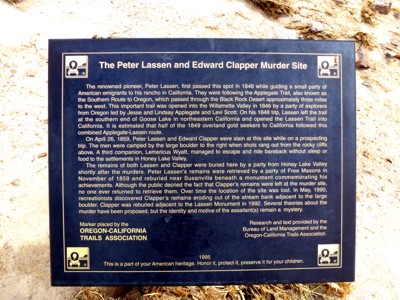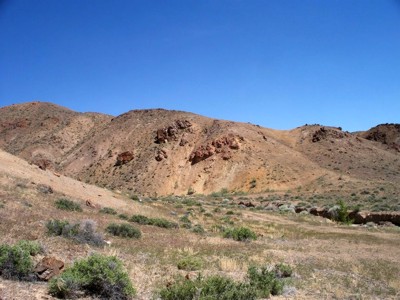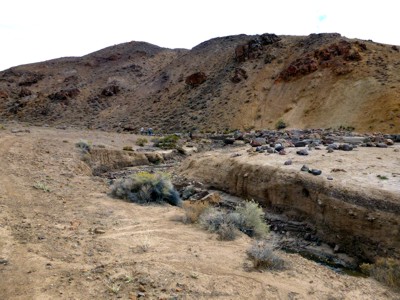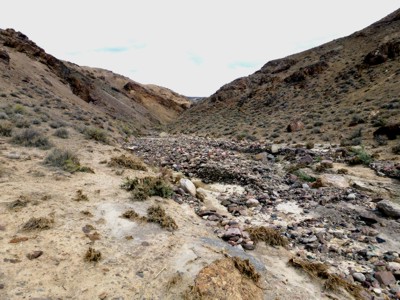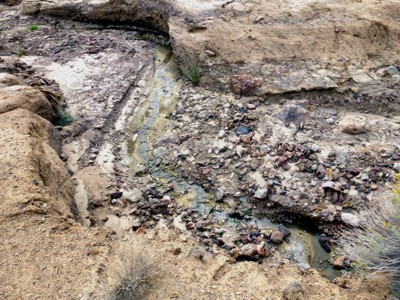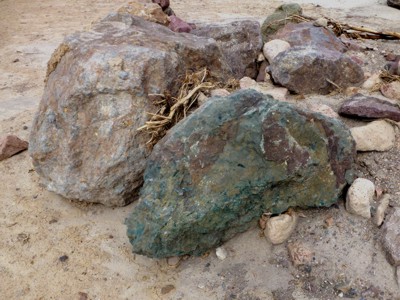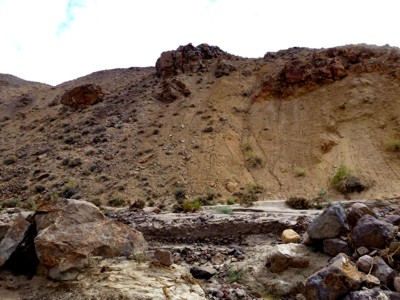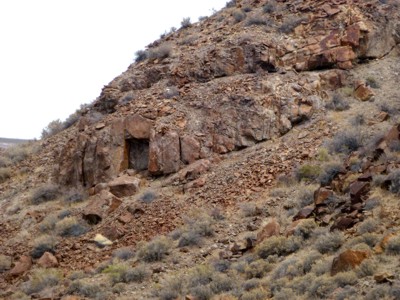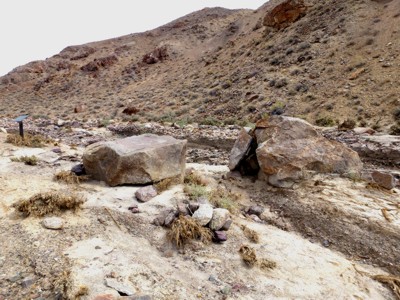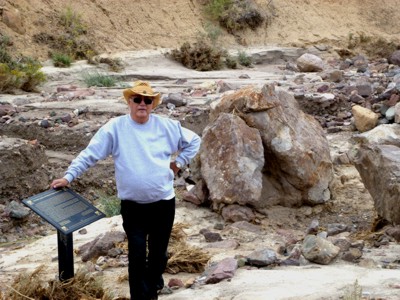![]()
![]()
►►ZOOM IN FOR DETAILS◄◄
►►CLICK HERE TO VIEW THE LASSEN/CLAPPER MURDER SITE IN GOOGLE MAPS◄◄
41º 12’ 37.63” N 119º 03’ 02.17” W
This is really an isolated place with nothing "historic" to show other than a plaque acknowledging the site and a big broken boulder of some importance. It is past Hardin City 15½ miles north of Double Hot Springs. Most definitely take an SUV or Pickup.
Peter Lassen was a renowned wagon train guide who drove many immigrants to California and Oregon. His name is on trails throughout the Black Rock desert. Peter Lassen, first passed this spot in 1848 while guiding a small party of American emigrants to his rancho in Honey Lake Valley, California. They were following the Applegate Trail, also known as the Southern Route to Oregon, which passed through the Black Rock Desert approximately three miles to the west. This important trail was opened into the Willamette Valley in 1846 by a party of explorers from Oregon led by Jess and Lindsay Applegate and Levi Scott. On his 1848 trip, Lassen left the trail at the southern end of Goose Lake in northeastern California and opened the Lassen Trail into California. It is estimated that half of the 1849 overland gold seekers to California followed this combined Applegate-Lassen route.
The Lassen/Clapper Murder Site holds a weird place in Nevada history. On April 26, 1859, Peter Lassen and Edward Clapper were slain at this site while on a prospecting trip. The men were camped by a large boulder when shots rang out from the rocky cliffs above. A third companion, Lemericus Wyatt was out of camp at the time hunting when he returned he found Lassen and Clapper murdered. Claiming it was Indians he managed to escape and ride bareback without sleep or food to the settlements in Honey Lake Valley.
The remains of both Lassen and Clapper were buried here by a party from Honey Lake Valley shortly after the murders. Peter Lassen's remains were retrieved by a party of Free Masons in November of 1859 and reburied near Susanville beneath a monument commemorating his achievements. Although the public decried the fact that Clapper's remains were left at the site, no one ever returned to retrieve them. Over time the location of the site was lost.
In 1990, one hundred and thirty-one years after the killing of Peter Lassen and Edward Clapper in the Black Rock Desert in Nevada, a rock hound found some human bones exposed at the mouth of a canyon on the western side of the Black Rock Range. This chance discovery, first treated as a possible recent homicide by the Nevada authorities, set in motion a series of forensic investigations by the FBI and the Smithsonian Institution in Washington, DC, which determined that the remains were those of Peter Lassen. They had buried the wrong man in Lassen's grave in Honey Lake Valley just south of Susanville, California. A plaque was installed at the site where the remains were found so that the actual historical location of the double killing would not be lost again due to the passage of time.
Several theories about the murder have been proposed but the identity and motive of the assailant(s) remain a mystery. The Indians were almost completely removed as suspects. The best scenario was that Lemericus Wyatt killed them; his tale of riding bareback to Honey Lake Valley was all but disproved and the motive, unfounded, was robbery of collected riches.
Click On Images To View Larger Versions |
|
The approach offers no hint of anything other than desert |
Around the bend it all begins |
Looking up the canyon from the camp site |
First bend of the wash |
Looking into the wash where remains were found |
These two rocks are really big |
The hills offer plenty of blind for a shooter |
Odd loose rock making a false doorway |
The big boulder where the camp was set |
Tom beside the plaque and campsite boulder |
If one treks up the arroya a good distance and then up a ravine on the left, about a mile away from the casmpsite, you will come across a crude shelter. Built of rock and tree branches it remains today well worn by the years. Believed to be Clapper's Cabin it is a good example of the desperation to survive by old miners and hunters. |
|
